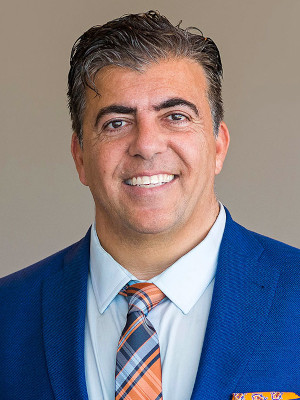Call it a multi-purpose tool for those with complex financial needs. Life insurance helps wealthy people pay for eventual estate taxes, multiply charitable gifts and free up cash for investment, to name just a few strategies.
Indeed, it has become an important means of preserving and transferring wealth. In a previous article, we covered four times when insurance saved the day for wealthy clients.
Here are five more case studies that show just how versatile life insurance can be.
Boosting value of philanthropic contributions

One way to multiply the size of a charitable bequest is to donate an insurance policy rather than cash. It’s a great way to ensure that the charity receives a larger sum than what the donor contributes, says Trevor Shaw, partner with Unity Insurance in Ottawa.
“When life insurance proceeds are paid into a corporation or trust, they come along with a capital dividend, which allows the shareholders to move money out to themselves on a tax-free basis,” Shaw says, “while the charity still receives the principal.”
Michael Godsoe, president of Godsoe Financial Capital Ltd. in Toronto, cites an example in which clients wish to eliminate an eventual estate-tax liability. They take out an insurance policy to provide funds for a charitable donation that would, in turn, eliminate the estate-tax liability in the year of their death.
This not only allows the rest of their assets to be passed along to heirs without a capital-gains burden but potentially ensures a family legacy through the naming of a hospital wing or a family foundation.
Transfer of corporate wealth
Corporate-held insurance can be used to facilitate the transfer of corporate wealth, says Godsoe.
The death of a shareholder in a holding company with $100 million in assets, for example, would trigger about $25 million in capital gains. Paying this tax with assets from the company can attract a second layer of dividend tax.
However, since funds invested inside a life-insurance policy allow the corporation to accumulate cash-value growth tax-free, the funds from the insurance payout can be used on a tax-free basis to pay the tax liability, he says.
Estate planning on the farm
When some of the heirs to a family enterprise choose to work in the business and others don’t, it can be challenging to divide estate assets fairly. Life insurance can be helpful, especially for owners of farming enterprises.
“In farming, there’s often the ability to pass on the farm on a tax-free basis,” says Dustin Schneider, president of Unity Insurance in Winnipeg. “In many cases, they get a multigenerational rollover and they can defer the tax into the future.”
Farms tend to become big operations, and significant tax advantages can come when passing it along to one or more heirs, Shaw says.
“The biggest conundrum is how to create a fair balance for the other kids,” he adds. “Life insurance is a great tool to equalize what the children will receive.”
Estate freezes
When a family business executes an estate freeze, mom and dad will freeze the value of their shares. Then all the future growth of that business will be allocated to their offspring, who are now the common shareholders, says Shaw.
“For mom and dad, their share value is fixed; it locks in this growth, and they will not have a tax event until they pass on,” he adds. “This is the perfect situation to complement with life insurance, because it will be paid the moment the tax obligation is due.”
Immediate financing arrangements (IFAs)
Through an immediate financing arrangement, life insurance is combined with a line of credit, and the value of every dollar in the policy is doubled.

“The loans are not against the death benefit of the policy; they’re against the cash value,” says Eric Benchetrit, founder and president of Sage Advisory Corp. in Toronto. He offers the example of a 55-year-old male client who has an estate-tax obligation and likes to invest in private mortgages.
“His premium was $100,000 a year, so he deposited the $100,000 into the policy, then, through the line of credit, he borrowed back the $100,000 and reinvested it,” he says. “He’s paying about 5 per cent in interest, which is tax-deductible, so it’s really only costing 2.5 per cent net to service it.”
If the $100,000 earns at least 8 per cent, the return becomes considerable over the course of several years.
In another case, the client is a builder and developer in his mid-60s. His wife is of a similar age, they have three adult children, and he owns a large real-estate business. “He is very comfortable with complexity within his real-estate portfolio; these portfolios sometimes take three to five years to mature, and then either there will be a liquidity event or you’ll hang onto this property and use it for rental.”
With recent large increases in property values, the children taking over this business will be facing steep capital gains in the neighbourhood of $10 million, “so we opted for the IFA,” Benchetrit says.
“Premiums of $775,000 were paid annually by his holding company for a $10 million whole-life policy. By depositing the funds into the policy, borrowing them back and reinvesting them into the portfolio, by age 85, his policy was worth $50 million. It leaves his estate, after the loan has been paid back, with $25 million, and there’s $40 million of capital dividend credit, so the family can pull $25 million out to pay the tax bill and keep $15 million.”
A few words of caution
Notwithstanding the many potential benefits, investing in insurance requires deliberation, says Kevin Algar, founder and president of Calgary-based Algar Virtue.
“Insurance can be a way to accumulate assets, but you’re paying a premium. You want to explore a variety of options, a variety of companies,” Algar says.
Putting the right policy in place “really does depend on a very sophisticated analysis of all the factors and risks,” he says. “Most people, if they have some wealth, are probably going to reach a point in life where they wish they had more, and it all comes down to a very detailed scenario analysis.
“If after that it looks like it should be done, I think you’re on the right track.”
The Canadian Family Offices newsletter comes out on Sundays and Wednesdays. If you are interested in stories about Canadian enterprising families, family offices and the professionals who work with them, but like your content aggregated, you can sign up for our free newsletter here.
Please visit here to see information about our standards of journalistic excellence.



